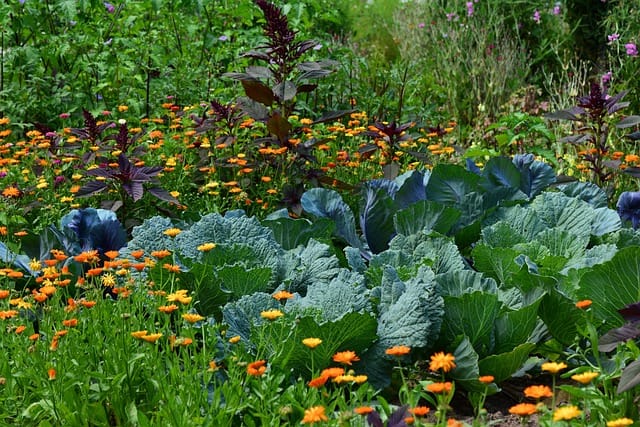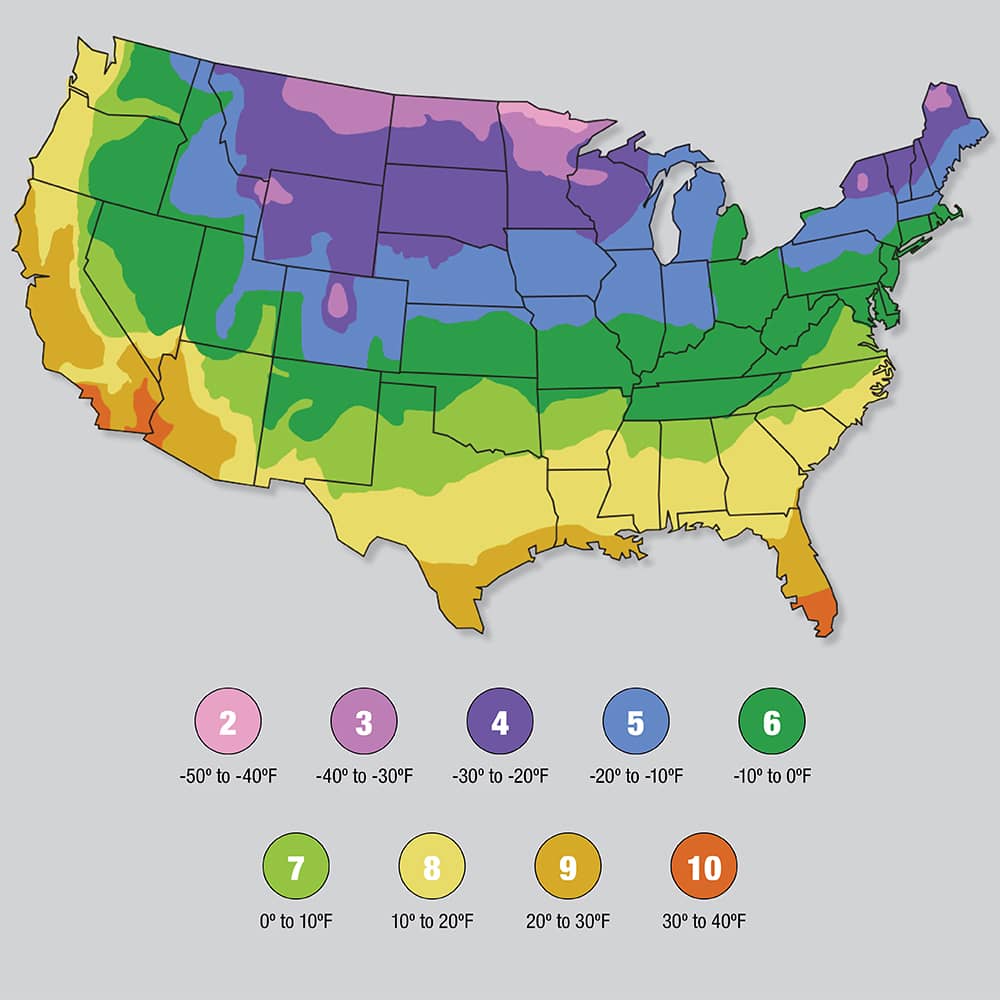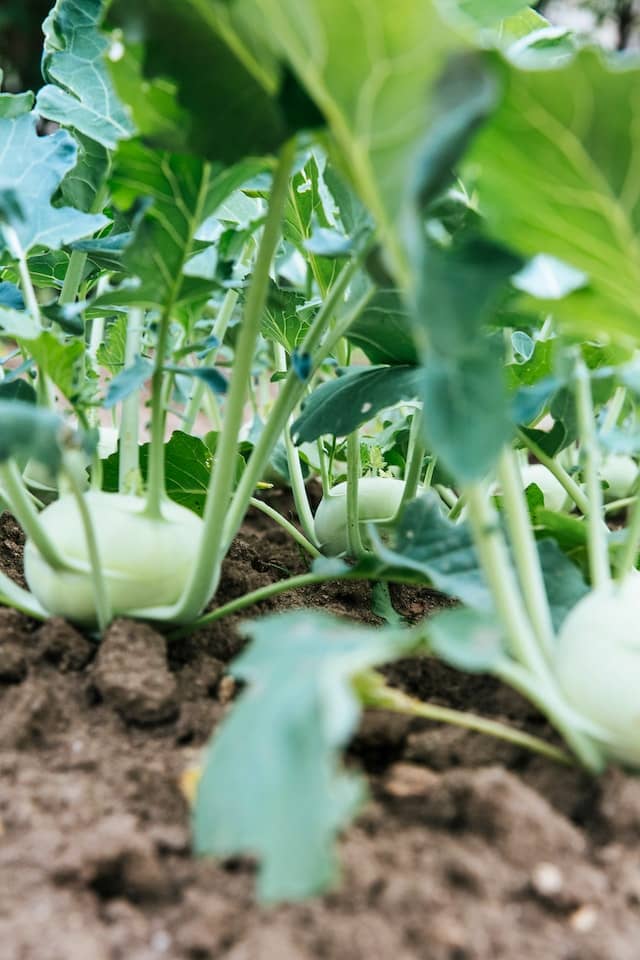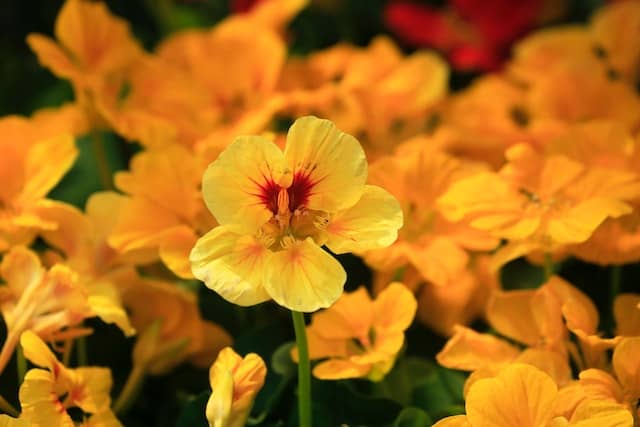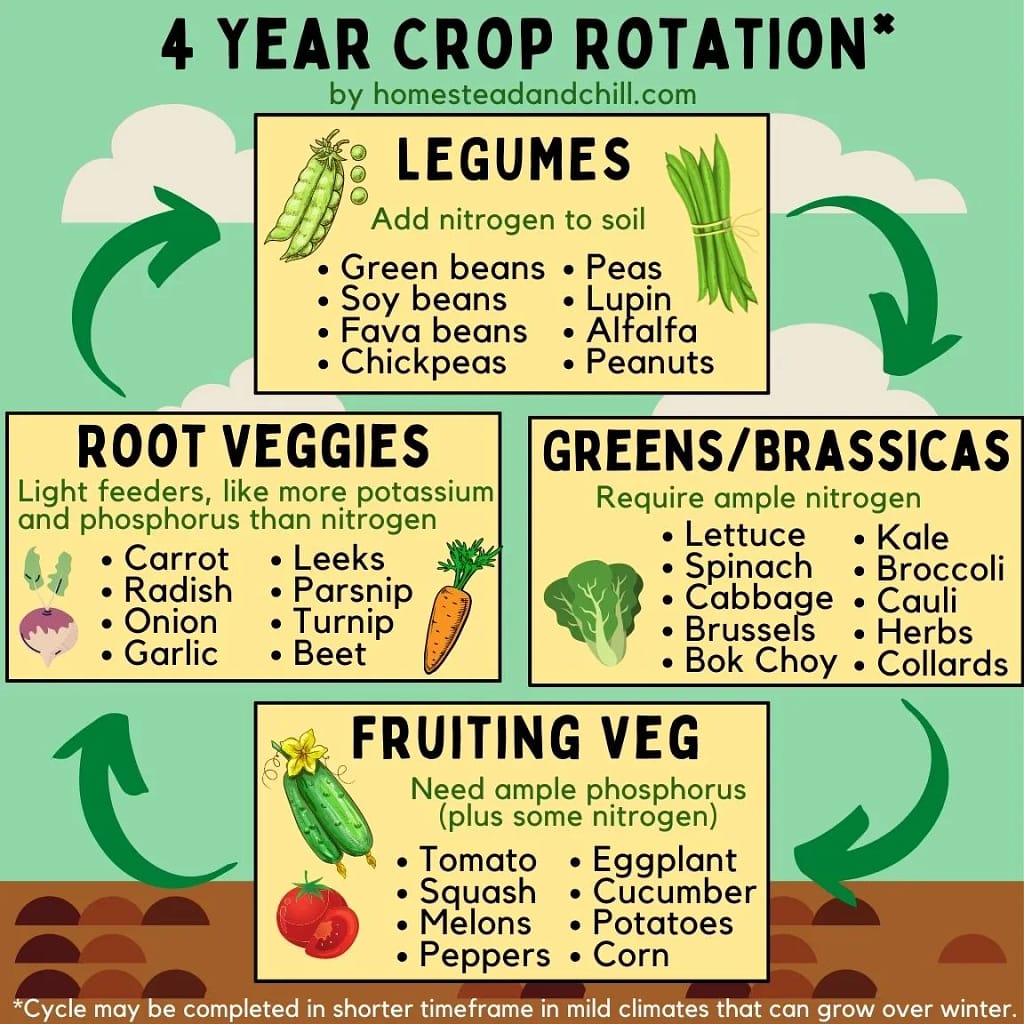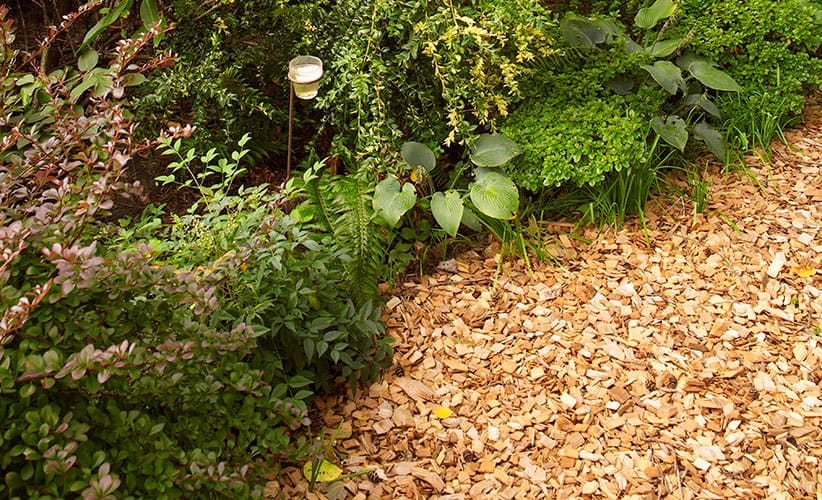Table of Contents
What Is Companion Planting?
Companion planting is the practice of growing different plants together for mutual benefit.
This can be done for a variety of reasons such as:
- pest control
- pollination
- providing habitat for beneficial insects
- maximizing the use of space thereby increasing crop productivity.
There are many different ways to practice companion planting, and the specific combinations of plants that you use will depend on your specific needs and preferences.
Companion planting can be a great way to improve the health and productivity of your garden, and it can also help to reduce the use of pesticides and herbicides.
Benefits Of Companion Planting
- Pest control: Some plants can repel or attract pests, which can help to reduce the need for pesticides. For example, marigolds can repel aphids, while nasturtiums can attract aphids away from other plants.
- Disease control: Some plants can help to prevent or control diseases. For example, garlic can help to prevent powdery mildew, while basil can help to control tomato blight.
- Soil improvement: Some plants can improve the soil by adding nutrients or by helping to break down organic matter. For example, legumes can add nitrogen to the soil, while comfrey can help to break down organic matter.
- Pollination: Some plants can attract pollinators, which are essential for the production of fruit and vegetables. For example, lavender can attract bees, while sunflowers can attract butterflies.
- Maximization of space: Companion planting can help to maximize space in your garden by allowing you to grow more plants in a smaller area. For example, you might plant tomatoes and basil together, or you might plant lettuce and carrots together.
- Increased crop yields: Companion planting can help to increase crop yields by providing protection from pests and diseases, improving soil quality, and attracting pollinators.
- Environmentally friendly: Companion planting is a more environmentally friendly way to garden than using pesticides and herbicides. It can also help to reduce the amount of water that you use.
- Aesthetic appeal: Companion planting can also add aesthetic appeal to your garden. For example, you might plant a border of marigolds around your tomatoes, or you might plant a row of sunflowers along the edge of your garden.
Let us help you get started!
Here is the companion planting chart for the most common plants and trees, if you have something you would like to add/correct us – please add a comment.
Definitive Companion Planting Chart
| Name | Good companions | Avoid | Benefits |
| Asparagus | Basil, Tomatoes, Nasturtium, Parsley,Calendula, Petunias | Onion, Garlic, Potato | Calendula, tomatoes, and petunias help avoid asparagus beetles |
| Basil | Peppers, Purslane, Tomatoes | ||
| Beans | Carrot, Cabbage, Cauliflower, Cucumber,Beets ,Corn ,Lovage, Nasturtium, Rosemary, Squash,Strawberries, Sunflower Broccoli,Eggplant, Garden peas, Potatoes, Radishes,Tomatoes | Chives, Leek, Garlic | Nasturtiums attract aphids and saves the beans. Lovage and rosemary repel insects. Sunflowers provide a micro-climate to shade for sun-stressed crops. Corn benefit from the beans’ nitrogen-fixing capabilities Pole beans provide structural support. |
| Broad Beans | Brassicas, Carrot, Celery, Corn, Lettuce, Potato | Fennel | |
| Beet | Brassicas, Lettuce, Sage, Bush beans,Garlic, Onion family | Pole Beans | Beets are companions for chicory and endive. Onions protect against borers and cutworms. Beets adds minerals such as magnesium to the soil |
| Broccoli | Celery, Chamomile, Dill, Rosemary, Marigold,Oregano, Brassicas | Oregano, Strawberry | Oregano repels insects. Plant Brassicas together so that they can all be covered with nets to protect from pests such as cabbageworm. They also all like lime added to the soil. |
| Brussel Sprouts | Potato, Thyme,Basil, Beans, Beet, Carrot, Garlic, Mint, Nasturtium, Onion, Peas | Strawberry | |
| Brinjal/EggPlant | Beans, Capsicum, Potato, Spinach,Catnip, Marigold, Peas, Pepper | Kiwi, Figs, Pomegranate, Curry Leaves | |
| Cabbage | Beetroot,Oregano,Garlic ,Nasturtium Sage,Broccoli, Brussels sprouts, Collard greens, Kale, Kohlrabi, Rutabagas, Turnips, Onions, Potatoes,marigold | Strawberry, Tomato | Nasturtiums deter insect pests such as beetles and aphids. Garlic planted alongside cabbage repels insects with its odor. Sage deters cabbage moth. |
| Carrot | Bush Beans, Pole Beans, Lettuce, Tomato, Chives, Leeks, Onions, Peas, Radishes, Rosemary, Sage | Chives, Dill, Parsnip | Chives improve the growth and flavor of carrots and deter aphids, mites, and flies. Rosemary and sage repel carrot fly. Leeks are thought to repel many flying pests (including carrot rust fly). Foes: Dill can reduce the yield of carrots. Dill, coriander, and other members of the Carrot family should not be planted near carrots (they tend to cross pollinate). |
| Cauliflower | Beans, Celery, Oregano, Marigold,Beets, Broccoli, Brussels sprouts, Corn, Onions, Radish, Spinach, Cucumber | Nasturtium, Peas, Potato, Strawberry, Tomato | |
| Celery | Cabbage, Leek, Onion, Spinach, Tomato | Parsnip, Potato | |
| Corn | Beans, Cucumbers, Melon, Pumpkin, Potato, Radish,Pole Beans, Dill , Sunflower,Garden peas,Potatoes, Squash | Tomato | Dill is thought to protect against aphids and mites. Beans can provide more nitrogen to the corn. Sunflowers can act as a structure and a windbreak for the corn, and dwarf sunflowers bring in ladybugs to control aphids. Pole beans are sometimes interplanted with corn, adding nitrogen and providing structural support. Spinach grows well in the shade of corn, keeping corn roots cool. |
| Cucumber | Beans, Celery, Lettuce, Pea, Radish, Marigold, Borage, Dill,Nasturtiums, Oregano, Sunflowers, Tansy | Cauliflower, Potato, Basil | Dill is thought to protect against aphids and mites. Nasturtium deters aphids, beetles and bugs and improves growth and flavor. Oregano deters pests in general. Radish, Nasturtium, and Tansy repel cucumber beetles; radish also repels flea beetles. Tansy also deters ants, beetles, bugs, flying insects, as does borage, improving flavor and growth. |
| Dill | Broccoli, Brussels sprouts, Cabbage, Corn, Cucumber, Lettuce, Onion | Carrot | |
| Garlic | Beets, Carrots, Cole crops, Eggplant, Peppers, Potatoes, Tomatoes | ||
| Kale | Beet, Beans, Celery, Cucumber, Dill, Garlic, Lettuce, Mint, Onion, Peas, Pepper, Potato, Rosemary, Sage, Spinach | ||
| Leek | Carrot, Celery, Strawberry | Beans, Peas, Spinach | |
| Lettuce | Asparagus, Carrots, Radishes, Strawberry, Peppers, Garlic, Onions, Marigold, Chives, Oregano,Peas, Poached Egg plants, Scallions,Zinnia | Beans, Beetroot, Parsley | Chives, onions, and garlic deter aphids and other pests by masking the scent of the lettuce with their aroma. Basil is thought to improve the flavor and growth of lettuce. Radishes can be used as a trap crop for flea beetles. Poached egg plants (Limnanthes), a wildflower, will bring hoverflies and other beneficials that eat aphids. |
| Melons | Corn, Radish, Marigold, Broccoli, Garlic | Potato | |
| Onion | Bean Sprout, Broccoli, Cabbage, Lettuce, Strawberry, Tomatoes,Beets,Carrot,Chard | Bean, Pea | Onions protect against borers and cutworms. Their aroma disorients pests. Onions benefit from marigolds as the smell of marigolds reduces the egg laying of onion maggot fly. |
| Peas | Beans, Carrot, Corn, Cucumber, Radish,Alyssum, Chives, Grapes, Lettuce, Mint, Spinach, Turnip | Onion Family | Chives deter aphids. Mint improves health and flavor. Alyssum brings in pollinators and encourages green lacewings, which eat aphids. Foes: Do not plant near garlic and onion, as they will stunt the growth of peas |
| Peppers | Basil, Marjoram, Onions, Oregano | Herbs like basil, oregano, and marjoram have a protective, insecticidal quality. | |
| Potato | Beans, Corn, Cabbage, Peas, Eggplant,Basil, Calendula, Catmint, Cilantro, Garlic, Horseradish, Oregano, Tansy | Cucumber, Pumpkin, Squash, Sunflower | Beans can improve the size of potato tubers. Cilantro protects against aphids, spider mites and potato beetles. Calendula, tansy, and horseradish planted at the corner of a potato patch wards off Colorado potato beetles. (Note: Tansy is considered invasive in some areas. See local guidelines before planting.) Catmint also repels Colorado potato beetles, but can bring cats into the vegetable garden, so it is a good idea to plant it in pots around the edge of the plot. |
| Pumpkin | Corn, Marigold, Pole Beans ,Buckwheat, Calendula, Nasturtium, Oregano | Potato | Buckwheat brings in pest predators which reduce insect pests. Nasturtiums protect against pumpkin and squash beetles. Oregano provides general pest protection. Calendula deters beetles and root nematodes. Squash is traditionally planted with corn and beans (“three sisters”) to disorient the adult vine borer. |
| Radish | Nasturtium, Peas, Lettuce, Cucumber, Beets, Spinach, Carrots, Melons, Squash, Tomatoes, Beans, Chervil | Potato | Chervil improves growth and flavor. Nasturtiums are a good trap crop for radishes. Radishes are often used as trap crops for flea beetles. Peas give nitrogen to the soil which benefits radishes. |
| Rosemary | Beans, Broccoli, Brussels sprouts, Cabbage, Carrot, Cauliflower, Kale | ||
| Spinach | Celery, Cauliflower, Eggplant, Beans, Cilantro, Oregano, Peas, Rosemary, Strawberries | Leek, Strawberry | Peas and beans provide natural shade for spinach. Cilantro, oregano, and rosemary is thought to repel insects. |
| Strawberries | Borage, Bush beans, Caraway, Chives, Lettuce, Onions, Sage, Spinach, Squash | Cabbage | |
| Tomato | Asparagus, Celery, Carrot, Parsley, Marigold, Basil, Borage, Calendula, Dill , Garlic, Nasturtium, Onion | Corn, Fennel, Potato, Kohl Rabi, Cabbage | Calendula deters general garden pests Asparagus repels nematodes. Basil repels whiteflies, mosquitoes, spider mites, aphids. Basil also attracts bees, which improves pollination, tomato health, and flavor. Borage repels hornworms. Dill makes it difficult for cutworms to lay their eggs and supports parasitic wasps that attack pest caterpillars. Thyme reduces egg laying by armyworms. |
| Zucchini/Summer Squash | Beans, Dill, Oregano, Parsley, Pepper, Radish, Buckwheat, Nasturtium, Zinnia, Corn, Garden peas | Potato, Pumpkin | Buckwheat brings in pest predators which reduce insect pests. To attract pollinators, plant oregano and zinnias. Nasturtium protects against aphids and whiteflies. |

